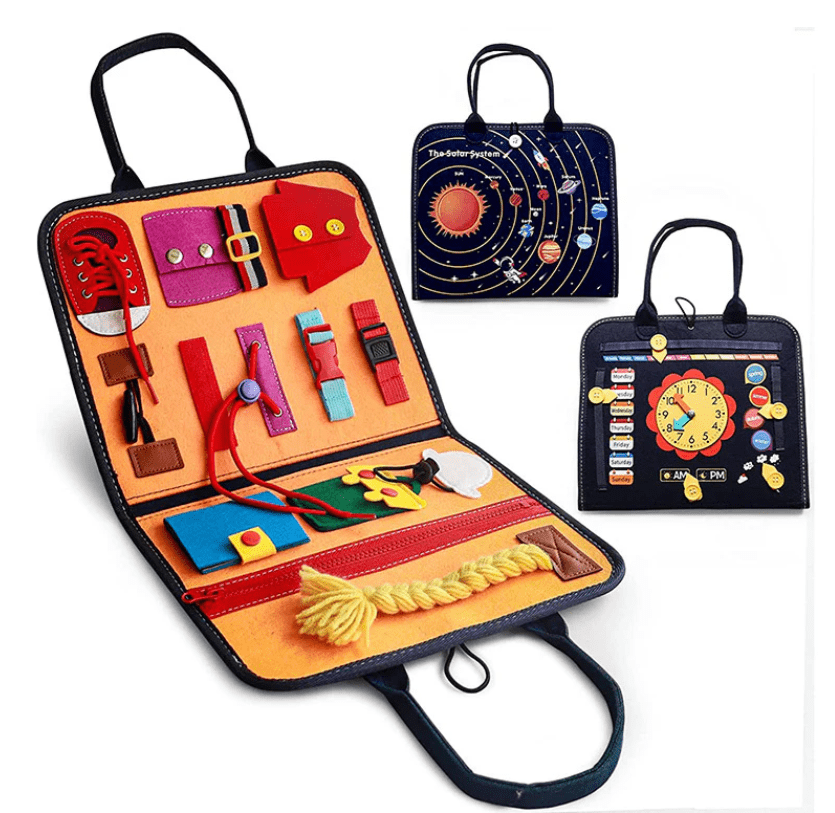Educational research consistently validates the superiority of experiential learning over passive instruction methods, particularly during critical developmental periods in early childhood. Hands-on learning experiences create lasting neural connections through direct manipulation and exploration, supporting cognitive development in ways that traditional educational approaches cannot match. Busy boards represent sophisticated educational tools that harness children’s natural curiosity while providing structured learning opportunities across multiple developmental domains. The opportunity to explore busy board for kids today opens pathways to enhanced learning experiences that align with contemporary educational psychology and child development principles. This detailed analysis examines how busy boards facilitate hands-on learning and their impact on various aspects of child development through evidence-based research and practical applications.

Constructivist Learning Theory in Practice
Busy boards embody core principles of constructivist learning theory, which posits that children build knowledge through active engagement with their environment rather than passive absorption of information. Jean Piaget’s research on cognitive development emphasizes the importance of manipulation and experimentation in forming mental schemas, and busy boards provide ideal platforms for this type of active learning. Children construct understanding through direct interaction with various mechanisms, textures, and cause-effect relationships embedded within these educational tools.
The self-directed exploration encouraged by busy boards aligns with Vygotsky’s Zone of Proximal Development concept, where children work independently on tasks that challenge their current abilities while remaining achievable with effort. This approach promotes intrinsic motivation and develops metacognitive skills as children learn to assess their own capabilities and adjust their approaches accordingly. Research indicates that children who engage in constructivist learning experiences demonstrate superior problem-solving abilities and creative thinking skills compared to those receiving traditional instruction methods.
Multi-Sensory Learning Integration
Effective busy boards incorporate elements that stimulate multiple sensory systems simultaneously, creating rich learning environments that accommodate diverse learning styles and preferences. Visual components such as colorful wheels, mirrors, and moving parts capture attention while providing spatial awareness opportunities. Tactile elements including various textures, fabrics, and materials develop discriminatory touch skills essential for later academic tasks such as braille reading or fine motor control activities.
Auditory feedback through bells, rattles, or clicking mechanisms reinforces learning through sound association and rhythm development. The integration of proprioceptive input through pushing, pulling, and manipulating activities supports body awareness and motor planning skills. This multi-sensory approach creates stronger neural pathways and improves information retention compared to single-modality learning experiences, as demonstrated in numerous neurological studies examining learning effectiveness.
Executive Function Development
Busy boards provide structured opportunities for developing executive function skills including working memory, cognitive flexibility, and inhibitory control. Complex activities requiring multiple steps to achieve goals challenge working memory as children must remember sequences while executing individual components. For example, unlocking a series of latches in proper order requires maintaining the overall goal while focusing on immediate tasks.
Cognitive flexibility develops through activities that can be approached in multiple ways or that require adaptation when initial strategies prove unsuccessful. Children learn to shift between different problem-solving approaches and modify their thinking based on feedback from their actions. Inhibitory control strengthens through activities that require patience and precise movements, such as threading beads or manipulating delicate mechanisms that demand careful attention and controlled responses.
Mathematical Concept Formation
Many busy board activities naturally introduce mathematical concepts through concrete experiences rather than abstract instruction. Counting opportunities emerge through elements like abacus beads, numbered dials, or sequential activities. Spatial relationships develop through three-dimensional puzzles, shape sorting activities, and geometric pattern recognition tasks. These early mathematical experiences create foundational understanding that supports later formal mathematical instruction.
Pattern recognition skills develop through repetitive elements and sequential activities built into busy board designs. Children discover mathematical relationships through direct observation and manipulation rather than memorization, creating deeper conceptual understanding. Research in mathematical education consistently demonstrates that children who experience concrete mathematical relationships before abstract instruction show superior mathematical reasoning abilities throughout their academic careers.
Social-Emotional Learning Opportunities
While busy boards often facilitate independent play, they also create opportunities for social interaction and emotional development. Sharing activities with siblings or peers develops negotiation skills, turn-taking abilities, and cooperative problem-solving strategies. Children learn to communicate their discoveries, ask for help when needed, and celebrate others’ successes during collaborative exploration sessions.
Emotional regulation skills develop through the challenges and successes inherent in busy board activities. Children experience frustration when activities prove difficult, joy when achieving goals, and satisfaction from persistent effort. These emotional experiences within safe, controlled environments help children develop coping strategies and emotional resilience that transfer to other life situations. The immediate feedback provided by busy board mechanisms helps children understand cause-effect relationships in emotional contexts as well as mechanical ones.
Language and Communication Development
Busy boards stimulate language development through both independent verbalization and social interaction opportunities. Children naturally narrate their actions during exploration, developing internal dialogue skills and expanding vocabulary related to actions, descriptions, and emotions. The rich sensory experiences provide concrete references for abstract language concepts, supporting comprehension and expression abilities.
Interactive play sessions with caregivers or peers create natural language learning environments where communication serves functional purposes rather than artificial exercises. Adults can model descriptive language, ask open-ended questions, and provide vocabulary expansion opportunities within meaningful contexts. This approach to language development proves more effective than isolated vocabulary instruction or passive listening activities.
Attention and Focus Enhancement
The engaging nature of busy boards naturally extends attention spans as children become absorbed in exploration and discovery activities. Unlike passive entertainment options, busy boards require active engagement that builds sustained attention abilities. The variety of activities available prevents boredom while maintaining interest through novel discoveries and increasing challenge levels.
The self-paced nature of busy board exploration allows children to develop internal motivation and persistence without external pressure or time constraints. This approach builds intrinsic motivation for learning activities and develops the ability to sustain focus on challenging tasks. Research indicates that children who regularly engage in focused, hands-on activities demonstrate improved attention abilities in academic settings compared to those with primarily passive entertainment experiences.
